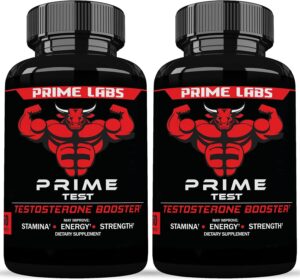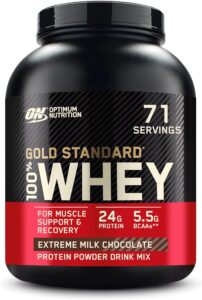
Sifan Hassan, born on January 1, 1993, in Adama, Ethiopia, has established herself as one of the most dominant long-distance runners of her generation. She moved to the Netherlands in 2011 and has since become a force in track and field, representing her adopted country with unparalleled skill and determination. Hassan made headlines during the Tokyo 2020 Olympics (held in 2021 due to the pandemic) by achieving an extraordinary feat: winning gold in both the 5,000 meters and 10,000 meters races, and bronze in the 1,500 meters, an accomplishment unprecedented in modern Olympic history.
Hassan’s rise to prominence is attributed not only to her innate talent but also to her meticulous training regimen and disciplined dietary practices. Her journey from a promising runner to an Olympic champion involves rigorous workouts, strategic planning, and a balanced diet that supports her intense physical demands. This article delves into the specifics of Sifan Hassan’s workout routines and dietary habits, shedding light on the dedication and structure behind her phenomenal success.
Workout Plan
Sifan Hassan’s workout plan is a testament to her commitment to excellence and her understanding of the demands of elite distance running. Her training involves a combination of endurance runs, interval workouts, strength training, and recovery sessions, meticulously designed to enhance her speed, stamina, and overall athletic performance.
1. Endurance Runs
Endurance is the cornerstone of long-distance running, and Hassan’s training includes substantial mileage each week. Typically, she runs between 100 to 130 miles (160 to 210 kilometers) per week, depending on her training phase and upcoming competitions. Her long runs, which often span 15 to 25 miles (24 to 40 kilometers), are conducted at a steady, moderate pace to build aerobic capacity and improve cardiovascular efficiency.
2. Interval Training
Interval training is a crucial component of Hassan’s regimen, aimed at boosting her speed and lactate threshold. This type of training involves alternating between high-intensity efforts and periods of rest or lower intensity. For instance, she may perform 400-meter repeats at a pace faster than race speed, followed by short recovery periods. These intervals are designed to enhance her VO2 max, which is vital for sustaining high speeds over distance.
3. Tempo Runs
Tempo runs, or threshold runs, are integral to Hassan’s training. These runs are conducted at a “comfortably hard” pace, slightly slower than race pace but faster than easy run pace. Typically lasting between 20 to 40 minutes, tempo runs help improve lactate threshold, allowing Hassan to run at faster paces without accumulating excessive lactic acid. This training component is crucial for maintaining a high pace over the duration of her races.
4. Hill Workouts
Hill training is another significant aspect of Hassan’s workout regimen. Running uphill builds strength and power in the legs, which translates to improved speed and endurance on flat terrain. Hill sprints, where she runs short distances up a steep incline, followed by a slow jog or walk down for recovery, are incorporated into her weekly routine.
5. Strength Training
To complement her running, Hassan engages in strength training exercises designed to enhance her overall physical conditioning and prevent injuries. Her strength training sessions typically include exercises such as squats, lunges, deadlifts, and core workouts. These exercises are aimed at building muscle strength and stability, particularly in the lower body, which is essential for maintaining efficient running form and handling the physical stress of long-distance racing.
6. Recovery and Cross-Training
Recovery is a crucial component of Hassan’s training plan. She incorporates various recovery techniques, including stretching, foam rolling, and massages, to alleviate muscle soreness and promote faster recovery. Additionally, cross-training activities, such as swimming or cycling, are sometimes included to maintain cardiovascular fitness while giving her running muscles a break.
Diet Plan
Sifan Hassan’s diet plays a vital role in her ability to perform at the highest levels. Her nutritional strategy is designed to support her intense training, aid in recovery, and maintain optimal body composition. Her diet focuses on a balanced intake of macronutrients—carbohydrates, proteins, and fats—along with essential vitamins and minerals.
1. Carbohydrates
Carbohydrates are the primary source of energy for endurance athletes, and Hassan’s diet includes ample carbohydrate-rich foods. She consumes whole grains, fruits, vegetables, and legumes to fuel her training sessions and replenish glycogen stores. Foods like brown rice, oats, sweet potatoes, and whole grain bread are staples in her diet. Pre-race meals and long training days are particularly high in carbohydrates to ensure that she has adequate energy reserves.
2. Proteins
Protein is essential for muscle repair and recovery, especially after strenuous workouts. Hassan incorporates a variety of protein sources into her diet, including lean meats, poultry, fish, eggs, dairy products, and plant-based proteins such as beans and lentils. She ensures adequate protein intake to support muscle recovery and growth, particularly following intense training sessions.
3. Fats
Healthy fats are also an important part of Hassan’s diet, contributing to overall health and providing a concentrated source of energy. She includes sources of unsaturated fats such as avocados, nuts, seeds, and olive oil. These fats help with hormone production and joint health, which are critical for maintaining performance and preventing injuries.
4. Hydration
Proper hydration is crucial for optimal performance and recovery. Hassan maintains hydration by drinking plenty of water throughout the day and using electrolyte-rich drinks during long training sessions or races. Staying well-hydrated helps in maintaining fluid balance, preventing cramping, and supporting overall bodily functions.
5. Vitamins and Minerals
A diet rich in fruits and vegetables ensures that Hassan receives essential vitamins and minerals necessary for overall health and athletic performance. Key nutrients such as iron, calcium, magnesium, and vitamin D are crucial for energy production, bone health, and muscle function. Hassan’s diet includes a variety of colorful fruits and vegetables to provide these vital nutrients.
6. Meal Timing and Frequency
Hassan’s meal timing is strategically planned around her training sessions to optimize energy levels and recovery. She typically eats a balanced meal containing carbohydrates and proteins within an hour after finishing a workout to replenish glycogen stores and aid muscle repair. Regular meals and snacks throughout the day ensure sustained energy levels and support overall training demands.
Sifan Hassan’s remarkable success as an Olympic champion is the result of a well-orchestrated combination of rigorous training and disciplined nutrition. Her workout regimen, characterized by a mix of endurance runs, interval training, strength exercises, and recovery techniques, is meticulously designed to enhance her athletic capabilities. Complementing this is a carefully planned diet that ensures she has the energy and nutrients required to support her intense training and competitive performance.
Hassan’s dedication to her sport and her meticulous approach to training and nutrition serve as an inspiration to aspiring athletes worldwide. Her achievements on the track are not just a testament to her talent but also to the disciplined lifestyle and strategic planning that underpin her success. For those looking to understand the level of commitment required to reach the pinnacle of distance running, Sifan Hassan’s regimen offers valuable insights into the intersection of elite athletic performance and rigorous preparation.










